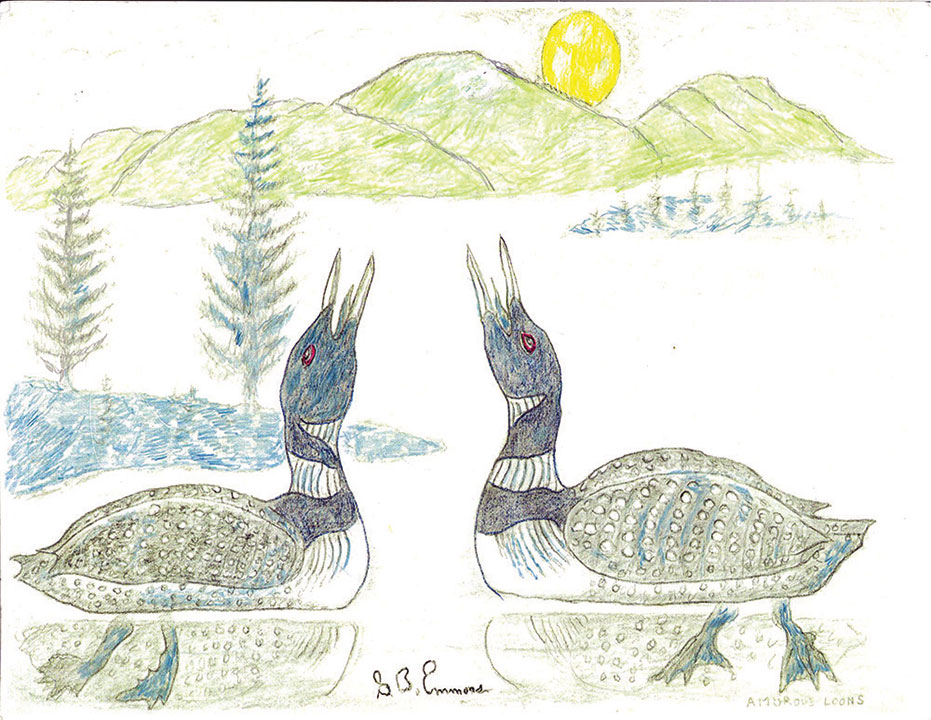The ancient species of the common Loon is one of the oldest living creatures on the face of the Earth. They go back several billion years in time and are among the first amphibious creatures that first crawled up on land out of the waters of the sea. By so doing, they became a charismatic and beloved symbol of the wild lakes where they live now. Today a reproductive pair of Loons require at least one-third of a mile across clear and clean waters for their healthy aquatic lifestyle.
As in my illustration, Loons are a familiar bird swimming in water partially submerged and propelled with churning webbed feet. They cannot stand or walk upright on dry land by themselves. In flight, they stretch out flat with long neck and bill sticking out ahead of and beyond the tail to be streamlined in motion to become airborne. From the water, they need a running start of several hundred yards to get into the air or they can become stranded on a short takeoff failing start.
The vocal calls of the Loon echo across the placid evening surface that is very clear coming through the darkness, but not easy to locate. There is the startling, yodeling alarm siren that ripples through a peaceful silence when humans get too close to the nest. It is accentuated by a sudden, wild flapping of the wing against the chest to ensure terror upon the intruding visitor.
Even more soulful on a dark night is an eerie wail to locate a missing mate as the sun goes down. Henry David Thoreau at Walden Pond in Concord told his friends it was the most unearthly sound he had ever heard.
The most parental Loons’ habit may be the Loons giving a young one a free ride on its back everywhere it goes. Like many young birds, Juvenile Loons soon learn to become on their own when mom and dad leave them behind to head off on migration in autumn.
Instead of a north-to-south direction, they migrate from west to east to spend the winter in the nearby coastal saltwater. Here, they soon lose their summer black-and-white plumage pattern. Once the juveniles settle in the coastal ocean, they try to stay there for the next two years.
Loons are well equipped for their feeding submarine maneuvers to catch fish and survive. Unlike most birds, they have solid bones that help them stay underwater when necessary because the earth’s atmosphere got overcast and cloudy when it did result in erasing most other worldly living creatures’ ability to breathe and survive. Because they could submerge for long periods of time, the Loon species survived and is still around today.
This ability is proof positive of Darwin’s theory of survival of the fittest, for which we today are very thankful for my article and illustration of the ancient Loon you got to read about and visualize in your experience.
By George B. Emmons
